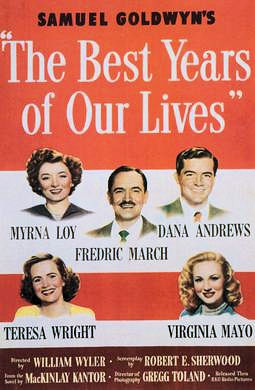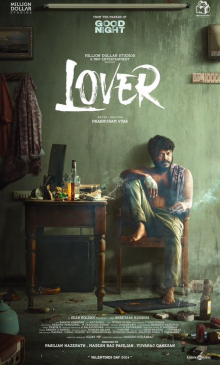What happens to you when you fight in a war? Yes, depression, PTSD, difficulty being a “normal” person. We have seen all of this portrayed in movies. But what happens to your family, and the life you had before you left? That’s what “The Best Years of Our Lives” shows us.
Made in 1946, while wisps of smoke from the devastation of WWII still hung in the air, “The Best Years of Our Lives” follows Al Stephenson (Fredric March), Horner Parrish (Harold Russell), and Fred Derry (Dana Andrews) as they come home from the war. They meet each other on the airplane taking them home and become fast friends. The movie shows how each of their lives unfold, and at the same time, intersect.
Typical of movies of that era, the story line is bare, straightforward, and yet deep. Life has to be rebuilt. Uncertainties abound. While Al returns to his old job at a bank, Fred doesn’t want to go back to being a “fountain attendant…soda jerk…” But he is unable to find a job because all he did was ‘drop bombs’ and ensuring that ‘they were on target’. Homer, on the other hand, was a football player before the war, and now with hooks in place of his hands, he does not cherish hopes of having a job or a life.
There are not too many movies that touch upon so many issues without undermining their importance. The movie portrays the lingering despair, the hollow self-esteem, and the constant self-doubt that arises from finding that change has been a constant in your absence. That you have been fighting for your loved ones who seem like strangers now. Even Al, for whom life appears to continue fairly smoothly compared to Homer and Fred, has his demons. He seems addicted to drinking and appears to have lost some of his confidence. The contrasting scenarios where Wilma (Cathy O’Donnell) is ready to accept Homer completely while Fred’s wife wants him to dress up in his uniform because then she would “be so proud to be out with you” is telling of the divided societal mindsets of the time.
But it’s not just emotional and personal readjustments that are taking place. Fred finds that the little drugstore has now become a big supermarket, and Homer finds that his uncle has fitted his pub “Butch’s Place” with a neon sign. Clearly, the country has already started rebuilding itself and evidence of capitalism is everywhere.
In this manner, realism and life in its littlest details are laid bare in this movie. It’s no wonder then that “The Best Years of Our Lives” won 7 Academy Awards, including Best Picture, Best Actor, and Best Director. At 2 hours and 52 minutes, it’s a pretty long watch. But get ready to settle in with your favourite munchies because you wouldn’t want to get up for 3 hours from this engrossing movie.
Rating: 4.5/5



